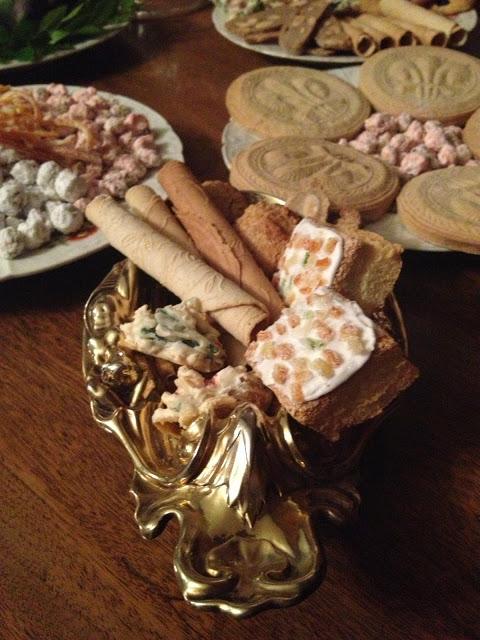
Some Regency period biscuits. In the foreground are millefruit biscuits, sweetmeat biscuits, filbert biscuits and rolled wafers. The round biscuits on the plate in the middle printed with the feathers emblem are Prince of Wales biscuit. In the background can be seen some spice biscuits and more rolled wafers. I made these for the dessert served after the supper in the BBC production Pride and Prejudice: Having a Ball. Other than the Prince of Wales Biscuits, these were all made from recipes in Frederick Nutt's The Complete Confectioner (London: 1789).
We tend to eat biscuits with beverages like tea and coffee nowadays. But in the past they were an important element of the dessert course and were dipped into sweet wine. Particularly popular for this purpose were various sponge biscuits, often made in long thin shapes so they fitted easily into the narrow wineglasses of the eighteenth century. Thus, the elongated form that sponge fingers, boudoirs, champagne biscuits, lange de chat continue to have to this day, though most of us have forgotten why they are this shape. Other kinds of biscuits printed with patriotic designs were particularly popular and some were designed to commemorate a particular event, such as Union Biscuits, which celebrated the Acts of Union of 1800. Biscuits with royal connections were particularly widespread. Prince of Wales Biscuit was a hard, unsweetened biscuit stamped with the emblem of the prince's feathers. They were made commercially by professional biscuit bakers like Werringtons of Oxford Street and a number of other city confectioners. The Yorkshire confectioner and tea dealer Joseph Bell, who claims to have worked for George, Prince of Wales, published a recipe in 1817 -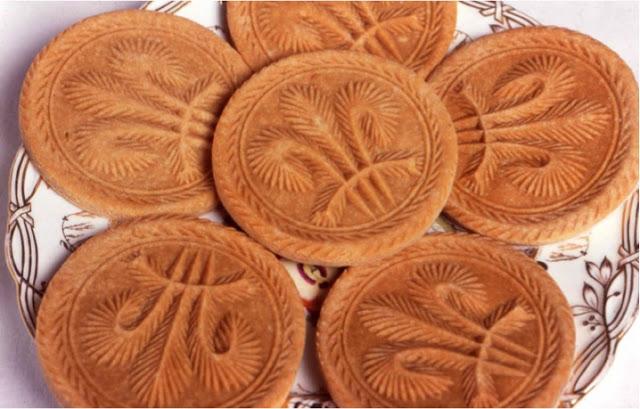
Prince of Wale's Biscuit
1 lb butter, and 3lb 8ozs of flour. to be mixed the same as hollow biscuits; and to be stamped with the princes feather; they must be pricked with a fork; and baked in rather a slower oven than the others.
From Joseph Bell, A Treatise of Confectionery (Newcastle upon Tyne: 1817).
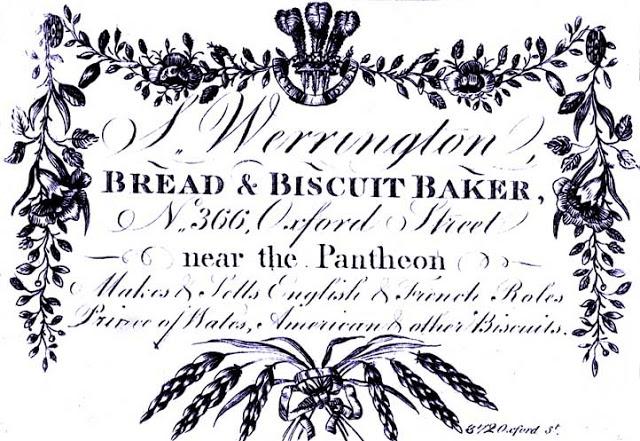
Prince of Wales Biscuit are listed in this late eighteenth century trade card.
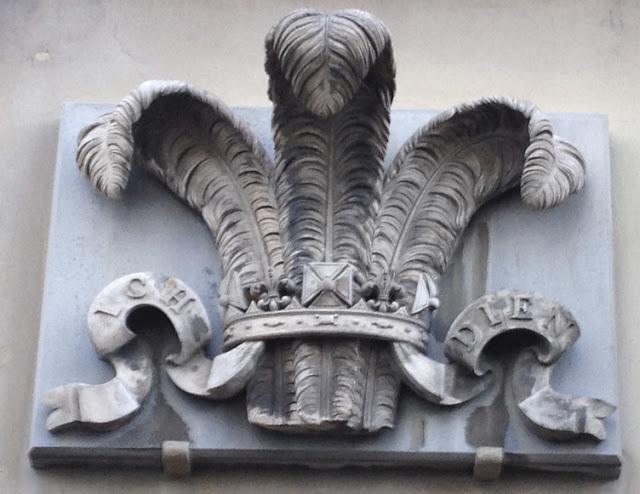
This fine stucco Prince of Wales Feathers adorns the space above the back entrance to the prince's kitchen wing at Brighton Pavilion. This emblem was the motif printed on the Prince of Wales biscuits. I also own a number of early nineteenth century moulds in this design used for sugar paste, butter, ice cream, jelly and flummery.
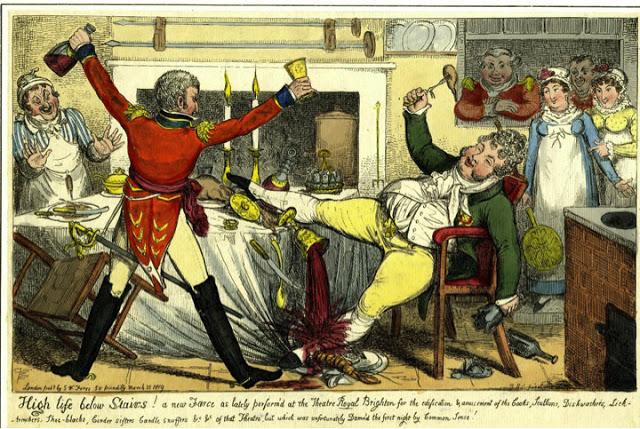
The Prince of Wales was well known for his gustatory inclinations. Here he is depicted living it up in the Brighton Pavilion kitchen with his servants. The cook on the left is probably meant to be Antonin Câreme.

A Prince of Wales biscuit print.
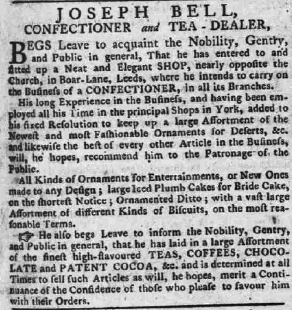
In this advertisement from The Leeds Intelligencer , Tuesday 23 May 1786, Jospeh Bell mentions the 'vast, large Assortment of different Kinds of Biscuits' he stocked in his newly-opened confectionery shop in Boar-Lane, Leeds.
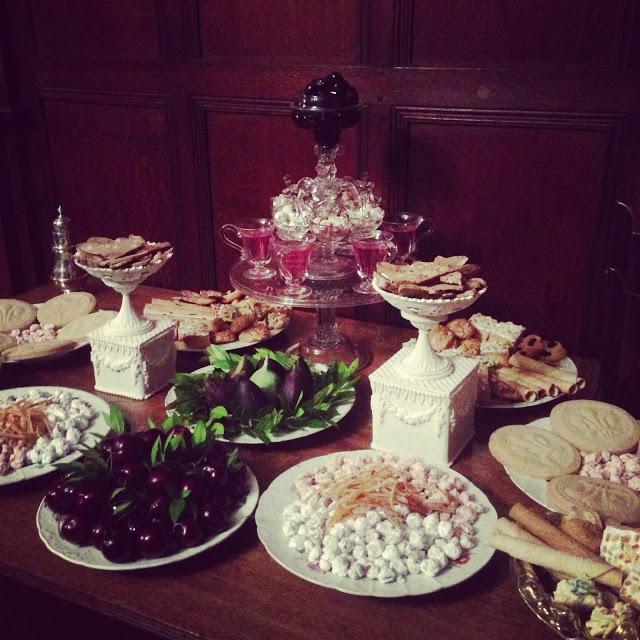
After the second course of the meal was cleared, the table was sometimes laid out with a dessert, including biscuits for eating with dessert wine. The food items here are waiting on a sideboard to be delivered to the table. Fresh cherries and figs are garnished with myrtle. The 'dessert tree' hung with glass baskets of sweetmeats has a top glass filled with cherries in brandy. Around it set out on the salver.are glasses of raspberry jelly. Pistachio and filbert prawlongs are arranged on porcelain plates with orange chips.
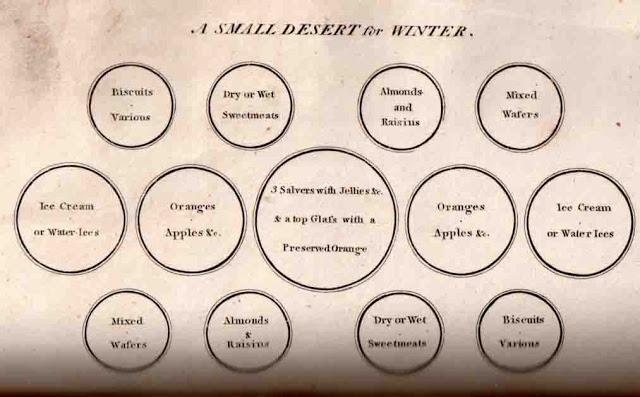
Biscuits were an important element of the dessert. In this plate from J. Caird, The Complete Confectioner (Edinburgh: 1809), there are two plates filled with 'biscuits various' in the corners of the table.
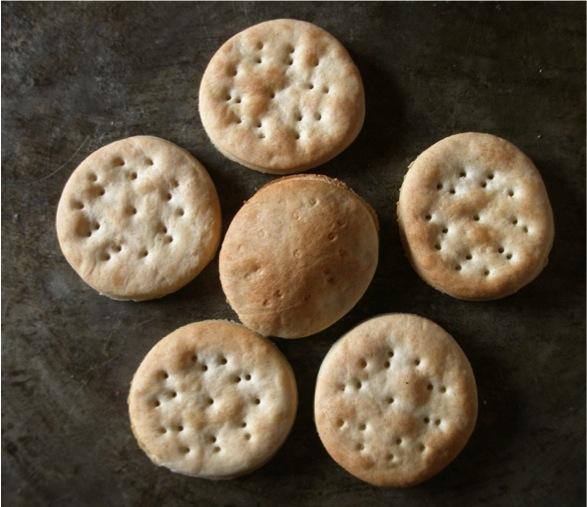
The biscuit in the center has not been 'docked' correctly and has blown up into a bubble.
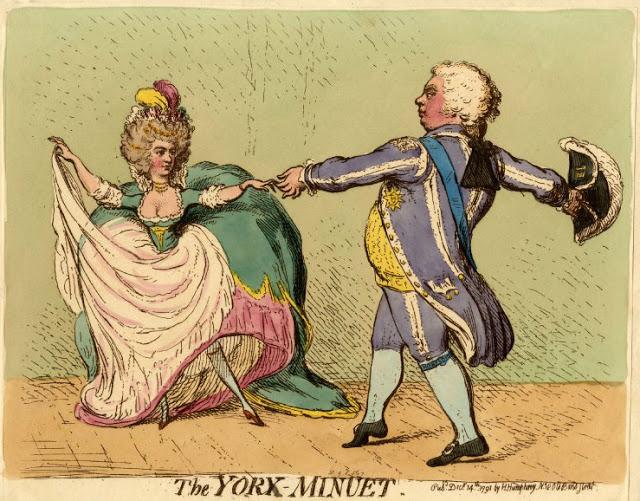
Duchess of York's Biscuits
1lb butter, 8 oz. of sugar, 3 lb of flour. Rub the butter into the flour; then add the sugar, and mix it up into a stiff paste with milk; rolle the paste out about a quarter of an inch thick, themust be cut square and staped with a proper stamp of the happy union and baked in a good oven.
From Joseph Bell, A Treatise of Confectionery (Newcastle upon Tyne: 1817).
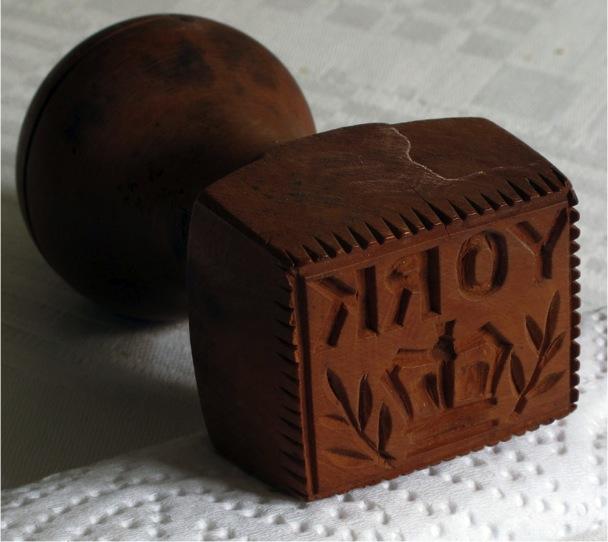

A boxwood York biscuit print
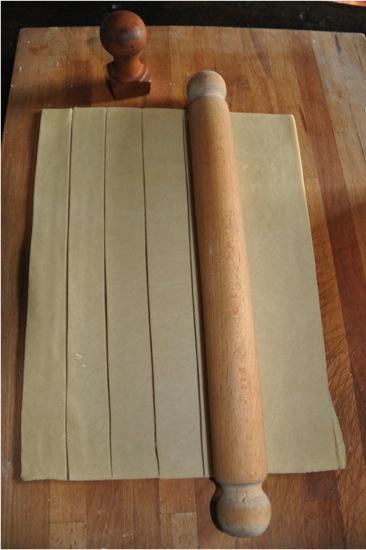
After the biscuit dough has been kneaded with a biscuit break, it is rolled out and cut into strips using the rolling pin as a ruler.
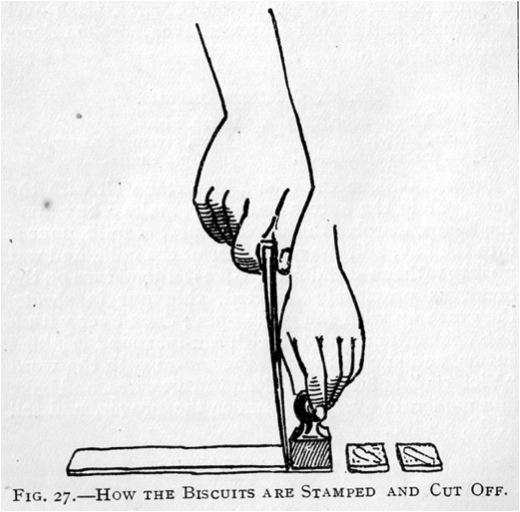
This diagram from Frederick Vine, Saleable Shop Goods, (London: 1898) illustrates how these biscuit prints were used.
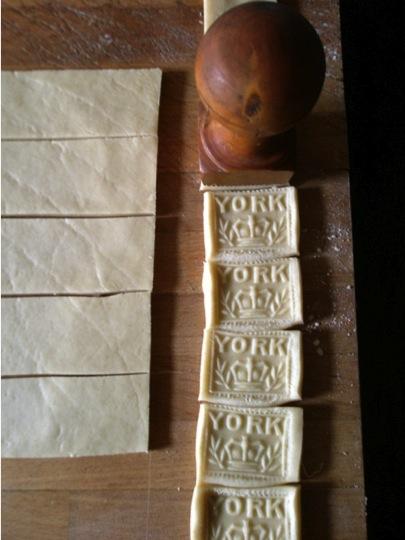
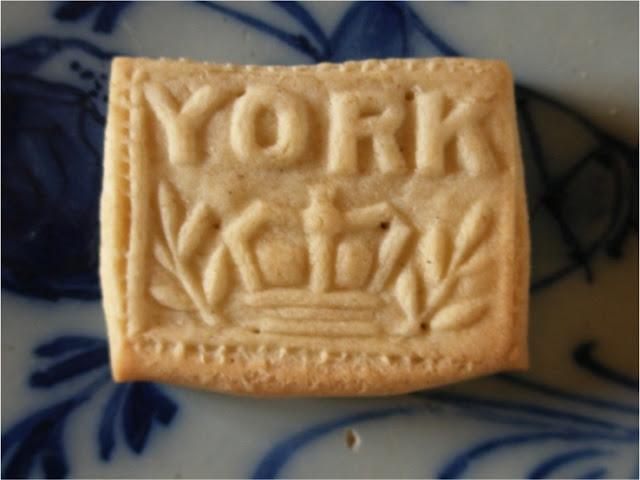
A baked York biscuit.
I recently acquired a boxwood print used to make a biscuit commemorating George's brother William, who succeeded him to the throne. As well as a crown and William's cipher it is decorated with an anchor, a reference to William's strong connection to the British Navy. In fact he was often known as 'Sailor Bill'.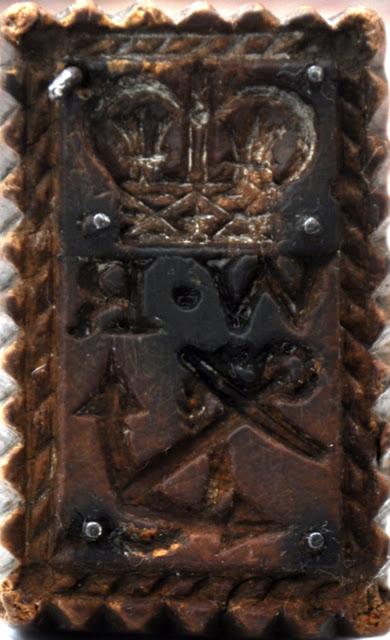
A very rare print or docker to make a biscuit commemorating King William IV. Note the six nails.
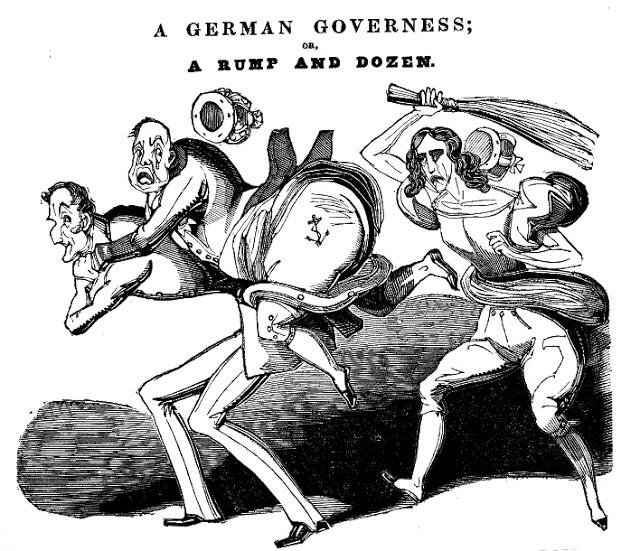
In this anonymous satyrical woodcut, Queen Adelaide is spanking King William IV with a birch whip. He has an anchor tatooed on his scarred backside. He is being carried by the Duke of Wellington. 1832
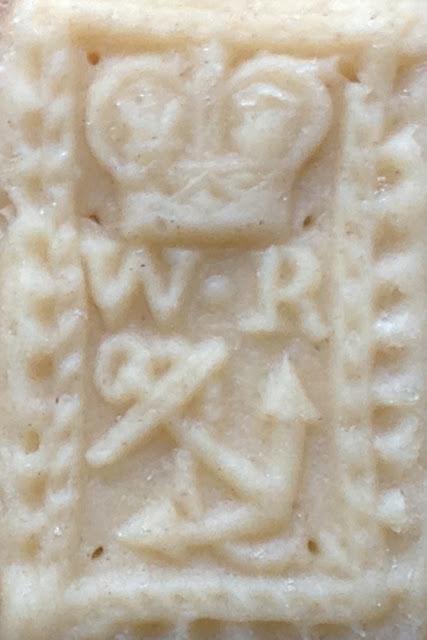
An uncooked biscuit printed with the docker above. Note the nail holes.
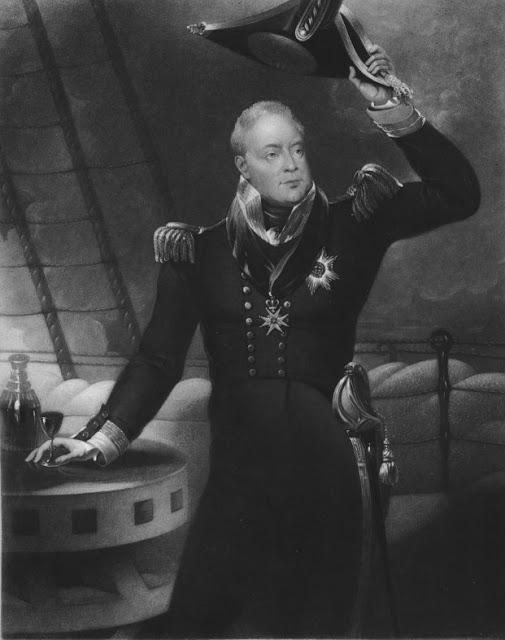
William IV in the uniform of a naval officer enjoying a glass of wine. Mezzotint by William Say after a painting by Michael Sharp. 1830. Perhaps his biscuit would have been served with wine.
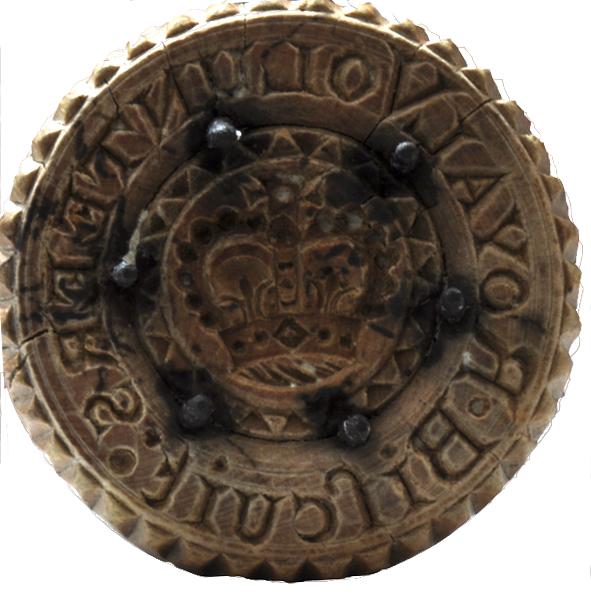
An extremely rare biscuit docker from the time of the Napoleonic wars. The words 'Royal Volunteers Biscuit' surround a royal crown. Note the 'long s' in 'biscuit'.

An unbaked Royal Volunteers Biscuit - note again the holes made by the docking nails.

King George III mounted on a horse to left, saluting marching volunteers. After R. K. Porter. 1800 Mezzotint and etching

Royal Volunteer Biscuits c. 1800 and King William Biscuits c. 1832.
